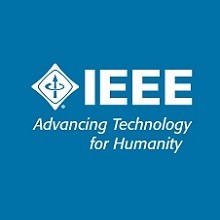
توسعه سلول خورشیدی PERC
Abstract
I- Introduction
II- Development of the Passivated Emitter and Rear Cell
III- Interdigitated Back Contact and Bifacial Solar Cells
IV- Commercial Passivated Emitter and Rear Cells
V- Conclusion
References
Abstract
This paper reviews the development of the passivated emitter and rear cell (PERC) silicon solar cell in the 1980s, which set several efficiency records, but was not taken up commercially at the time. Following extensive development of suitable fabrication processes, materials, and production tools, the PERC solar cell is now on track to become the dominant commercial solar cell. Since photovoltaics (PV) itself is on track to become the dominant energy generation technology, the PERC is having a global impact in both energy generation and greenhouse gas emission reduction. Assuming an average growth rate of annual PV installations of 25%, PV mitigation of greenhouse gases will reach about 5% in 2022, including 2% from PERCs, with much higher values expected later in the 2020s. This review focuses on the period of development of the PERC during the 1980s.
INTRODUCTION
IN 2017, solar photovoltaics (PV) constituted 40% of global net new electricity generation capacity additions with fossil, nuclear, wind, hydro, and other renewables constituting the balance (see Fig. 1). PV is growing much faster than the other generation technologies and may exceed half of global net new generation capacity annual additions by 2020. Continued rapid growth of PV (and wind energy) would have a major impact on global emissions of greenhouse gases by displacing coal and gas electricity generation. The average growth rate of PV in terms of annual new deployment has been about 30% per year over the past ten years [1]. This growth rate, if continued until 2025, would result in PV producing 10% of the world’s electricity. For decades, about 90% of global solar cell production has been of the aluminum back surface field (Al-BSF) design. This cell design offers moderate efficiency and simple and reliable fabrication, and utilizes vast experience in terms of manufacturing tools, materials, and procedures. The cell manufacturing cost (separate from polysilicon and wafering) represents about one-quarter of the module cost, while the module cost is about one-half of the system cost [8]. Thus, the cell fabrication process is about one-eighth of the completed system cost. Most module and system costs depend upon the area of cell deployed and, hence, depend inversely on cell efficiency.
